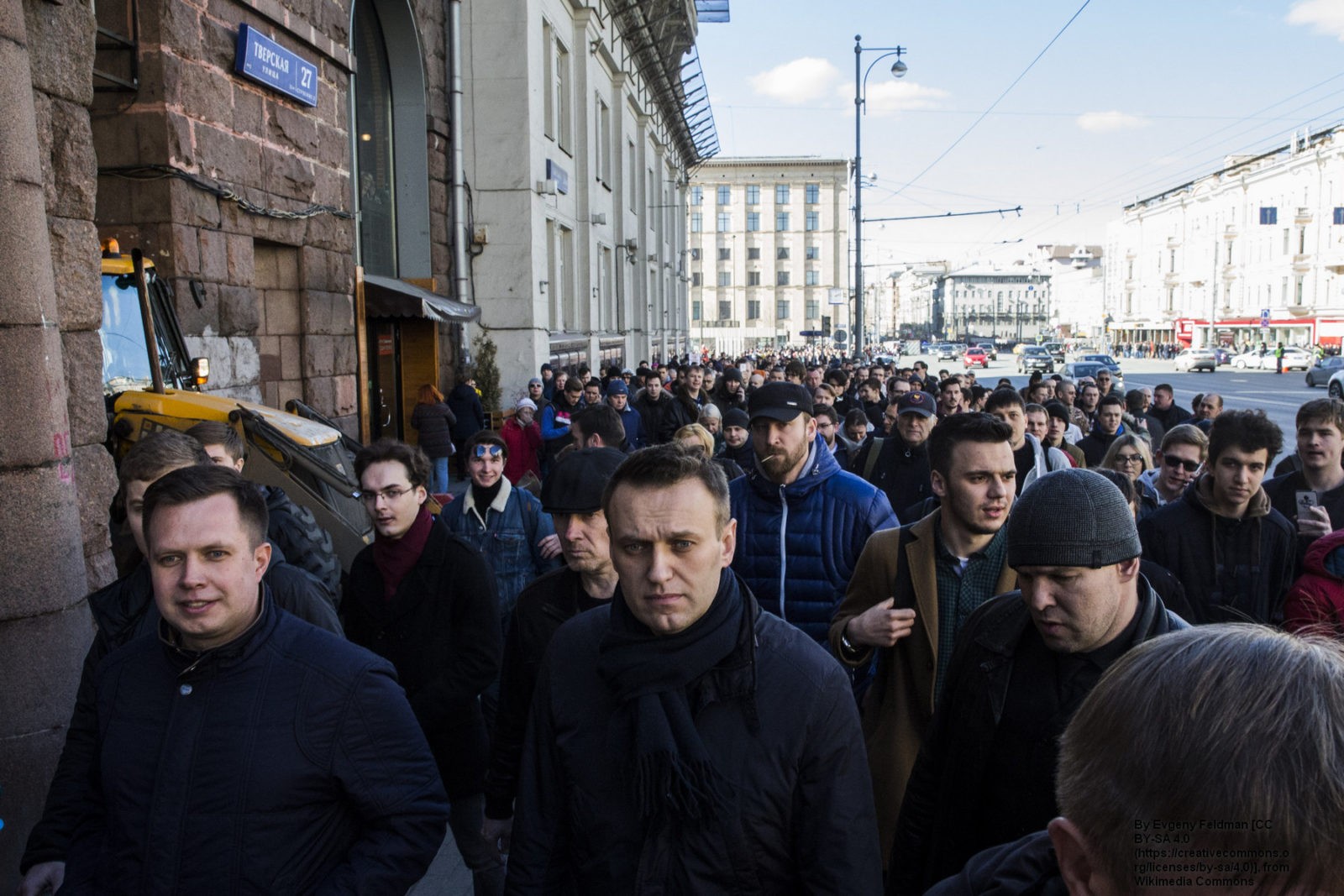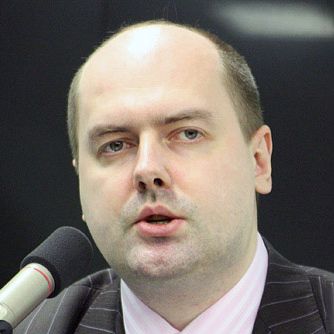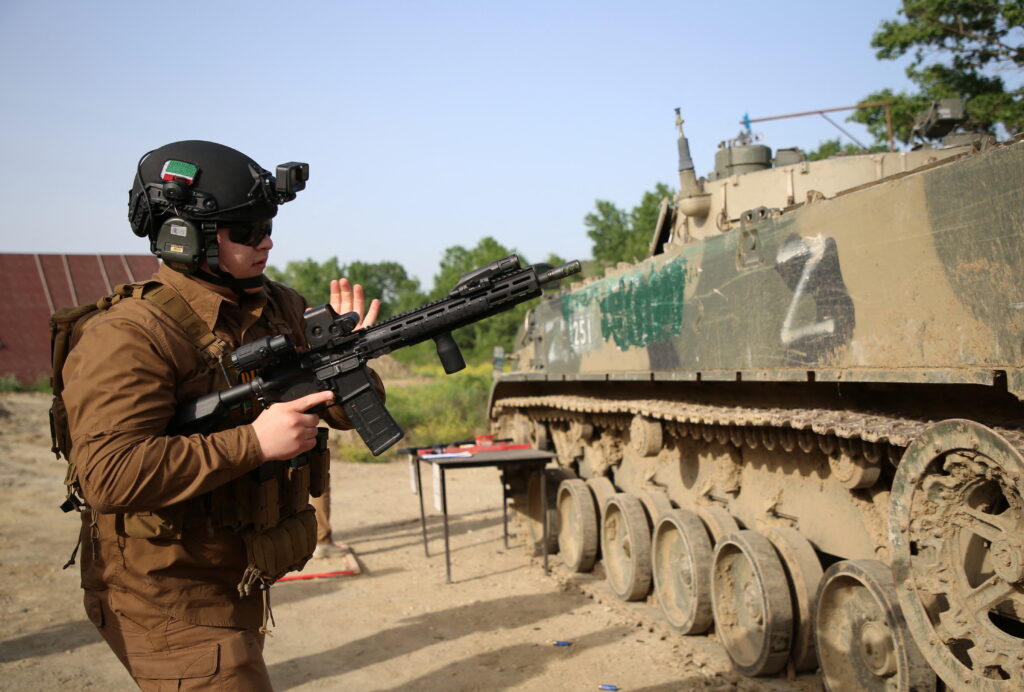Protests in authoritarian regimes like Russia or Turkey can be very different to those in the West. When a demonstration takes place in a Western country, they are as natural to society as, say, elections. They are seen as part of democratic expression, a means of putting pressure on rulers.
In Vladimir Putin’s Russia, any prospective protestor is weighed down by heavy historical, political and psychological constraints. They harbor a more general fear that a protestor “might face the consequences” for participating in a rally, whether that means police violence or subsequent arrest and persecution.
Ctizens in authoritarian regimes often are skeptical about whether these collective efforts can change anything; the use of force and/or money are seen as what can change things, whereas to protest in a display of solidarity is often dismissed as futile.
A jadedness is all too present even before the protests begin. A culture of primitive materialism is encouraged in authoritarian regimes, and that generates widespread political apathy. Effectively, this allows a state to “bribe” its citizens: material well-being in return for freedoms.The irony of course is clear: authoritarian regimes wax lyrical about moral values, yet they are founded on the use of force and bribery.
Usually a protest in Russia begins out of complete exasperation with the lack of political options from elections and a feeling that something has to be done. Even if perceptions point to protests changing little, if anything, at least they might change more than elections. The majority of the electorate, however, are not prepared to go underground.
Fear, jadedness and an urge to do something, even if futile, all conflict in the minds of a Russian protester. To understand how this works, it is worth looking back at how protests have come together in the recent past.
Perestroika Protests
Early perestroika rallies were most probably linked to the rising awareness that “you won’t be thrown in jail for that”. In December 1986, academician Andrei Sakharov – the spiritual leader of the opposition – was allowed to return to Moscow from the city of Gorky where he had spent several years in forced exile. Mikhail Gorbachev spoke of Glasnost, a loosening of political control and a release of political prisoners. As the Soviet Union became more open to dissenting voices, Boris Yeltsin, seized the moment, publicly criticizing a number of colleagues, including the head of state Mikhail Gorbachev during the October plenary meeting of the CPSU Central Committee in 1987. Yeltsin resigned from his post within the ranks of the Politburo in protest against the slow pace of perestroika. A burgeoning number of critical articles about the Soviet system appeared in the press.
Against this backdrop, the first rally, which attracted approximately 100 people, was held on May 28, 1988, at Pushkin Square in Moscow by the Izvestia newspaper building. Numerous other rallies at Pushkin Square were held on a regular basis soon afterwards. Sometimes, crowds were dispersed by police and sometimes not. However, no one was thrown in jail. The number of participants then grew.In early 1989, tens of thousands of people gathered in Zelenograd at a meeting with investigators Telman Gdlyan and Nikolay Ivanov who had uncovered a corrupt scheme involving representatives of the highest echelons of power. The Congress of People’s Deputies of the USSR was held in May 1989 and the entire country followed developments on TV. No congresses of this type which included discussions and alternative voting had taken place since the Bolsheviks dissolved the Constituent Assembly in 1918. The congress was accompanied by mass rallies in Luzhniki. The number of participants reached 100 thousand people. Opposition rallies were equally numerous until August 1991 when at least half a million people took to the streets to protect Russia’s newly-elected president, Boris Yeltsin, against coup organizers. The country had a free press by the time and the practice of jamming foreign radio stations had been discontinued.
The “red-brown” protest
The situation altered after August 1991 as opponents of Boris Yeltsin and his reforms began to hold rallies. A square situated in front of the Historical Museum became their permanent headquarters; a meeting point akin to Pushkin Square for democrats. The “red-browns” sold their literature on the steps of the museum including books and newspapers such as Pravda, Sovetskaya Rossiya and Den which combined to make up the voice of the new opposition. No one regretted the demise of the CPSU whereas the dissolution of the USSR caused a storm of indignation among the advocates of its continued existence. Some were outraged by the liberalization of prices in January 1992 whereas others, contrarily, were happy to see goods stacked on store shelves, even if they were far more expensive than before.
New opposition movements literally had a stand-off on February 23, 1992, when a rally involving nearly ten thousand participants, organized by the “red-brown” opposition (i.e. communists along with nationalists of various factions), ended in clashes with police. Another rally – aimed at bringing about a shift of power – was due to take place on March 17, 1992 (the anniversary of the 1991 referendum on the future of the USSR). At the same time, it was announced that a new Congress of People’s Deputies of the USSR, voluntarily dissolved in December 1991, would be held. Labor Russia, led by Viktor Anpilov, was the main organizer. More than 100 thousand people gathered on Manege Square. However, they opted against the use of violence and the congress in the Moscow suburb was attended by only a handful of former people’s deputies which could hardly be said to be legitimate. It is noteworthy that the “red-browns” failed to attract more protesters even during the political crisis of fall 1993 which proved, once again, that the timing and cause of mobilization remains impossible to predict. Some ideas can stir emotions and prompt former philistines to enter the politicized nucleus whereas others merely prompt indifference. But this time, the utopian idea of the USSR’s revival had mobilization potential.
Yeltsin against the Congress of People’s Deputies
Mass rallies were organized by both Yeltsin’s proponents and opponents during the days of his confrontation with the Congress of People’s Deputies in 1992-1993. The largest rally, during which approximately one hundred thousand people gathered, was organized in support of Boris Yeltsin on March 27, 1993, near the Vasilievsky Slope. This was the day that attempts to impeach him failed due to insufficient votes. The opposition gathered several tens of thousands on October 3, 1993, and clashes with the militia broke out. Moscow’s mayor’s office was seized and an attempt to storm the Ostankino Television Tower was carried out. Boris Yeltsin’s supporters took to the streets in the evening and the, up to that point, impartial army, finally intervened. The revolt was suppressed on October 4, 1993: tanks were deployed in an attack on the Supreme Soviet building prompting the rebels to surrender.
Why did rallies attract more pro-Yeltsin supporters? To start with, their numbers were buoyed by Yeltsin’s popularity in Moscow where he received 75% of the vote which far exceeded the 58% he received nationally in the referendum of April 1993. Secondly, state-owned television channels supported Boris Yeltsin whereas the opposition enjoyed no such support.
The 1993 events culminated in the adoption of a new Constitution and political activity gradually declined. Yeltsin’s supporters stopped organizing rallies altogether whereas communists organized regular rallies on May 1 and November 7, although protesters numbered only 10,000 even at the height of the protests. Shows accompanied election campaigns; politicians hired famous figures which became an important means by which to attract people. Not only did vocalists deliver their entire repertoires (voluntarily on the face of it, but, in reality, in return for a performance fee) but also declared their support for politicians who entered the stage. The most notorious example of such was a show organized in support of Boris Yeltsin’s 1996 campaign which was conducted under the slogan ”Vote or lose”. Others, including the leader of communists Zyuganov, have resorted to similar methods and the same tendency was also apparent during Vladimir Putin’s first term in office.
Putin’s ”coup”
A coup did, in fact, take place in Russia in 2004 and governor elections were repealed and legislation on political parties tightened. Political repressions were initiated with the case against businessman Mikhail Khodorkovsky, an opposition sympathizer whose case became one of the first, high-profile cases of this type. Parties represented in parliament refrained from criticizing Putin and expressed their discontent only in relation to specific governmental measures. Liberals had been shut out of parliament and it was obvious that their voices were inaudible to the authorities inside.
The Ukrainian “orange revolution” provided a glimmer of hope but failed to prompt any more than a negligible turnout at rallies. For instance, the first 2005 rally of the “Defense” youth movement, which attracted just over 100 people, was regarded by the organizers as successful – as few as several dozen would gather ordinarily. The liberal opposition attracted more protesters in summer 2006 when former Prime Minister Mikhail Kasyanov, who had access to some financial resources, joined in. The “Other Russia” coalition conducted a number of rallies under the umbrella of the “Dissenters’ March” involving nearly 5 thousand people in December 2006, April, June and November 2007. Rallies were organized with the financial support from a newspaper circulation consisting of hundreds of thousands of copies, commercials aired on the “Echo of Moscow” radio station – the only electronic media which sympathized with the opposition, by placing Internet advertisements etc. Thus, the very core of Vladimir Putin’s opponents could be appealed to. Widespread publicity could not be ignited, although arguments regarding social justice and ethnic crimes were used in advertisements aimed at non-liberals.
The authorities were getting ready, too. A repressive piece of legislation on rallies was adopted. According to it, applications had to be submitted no earlier than 15 days in advance and there was a standard three-day-deadline for the authorities to reply. In practice, this meant 12 days or less for the advertisement, since the newspaper had to be printed. Different types of provocations took place, from the withdrawal of newspaper circulations to the blocking of the underground passages via the Garden Ring in November 2007 designed to impede marches by protesters. It was proposed that rallies would be held at squares situated far from subway stations. The authorities failed to conform with the deadlines established under law for replying to applications. The number of protest actions plummeted after the election of President Dmitry Medvedev in March 2008 and the subsequent wave of apathy (and any hope of reforms). In 2011, when all hope as regards Medvedev had apparently been lost, rallies in the form of Dissenters’ Marches followed, but the number of their participants was as low as 5-7 thousand people.
”The Russian March”
A fundamentally new phenomenon of the “Russian March” emerged in the mid-2000s. The 2005 rally was organized without any commercials and gathered several thousand people. Nearly 10,000 people participated in the 2006 rally which became quite an event although, initially, the authorities did try to ban it. Since 2006, the tribunes have been occupied not by the “nationalist patriots” similar to the leaders of the 1990s who dreamt of the abstract greatness of the country and the revival of the USSR, but by ethnic nationalists. Their attitude towards Putin was decisively negative and obscene cries became the trademark of their marches. Putin was perceived as someone who favored ethnic minorities and who welcomed immigrants to the country on the one hand, and repressed nationalists and refused them entry into politics on the other.
Russian marches, organized on November 4 from 2006-2011, attracted no more than 10,000 participants given the somewhat limited use of commercial advertising (limited only to stickers in the subway). These constituted the most well-supported mass actions during that period. The number of march participants began to decrease after 2012 and dropped to several thousand protesters in 2015-2016 when the nationalist movement split due to differing attitudes towards the war against Ukraine. Although the number of opponents to the war was greater, they became frustrated and left the streets. Nationalist-opponents of the war against Ukraine began to participate in events organized by the liberal opposition as a separate column of protesters.
The 2011 ”revolution”
On the day after the election, an unexpectedly large (approximately 15 thousand people) rally of liberals, dismayed by election fraud, took place on December 5, 2011. No commercial advertising was involved and information was disseminated via social media. More than 50,000 people gathered on Bolotnaya Square on December 10. There were no problems with the coordination of rallies; thousands of people took to the streets of Moscow on December 6-8 and no space remained in police stations for detainees. The protest reached its peak on December 24 – the number of protesters at the Sakharov Prospect exceeded 100,000 people.
Both left-wingers and nationalists joined in the rallies. The notion of a possible revolution occupied the minds of many. Indeed, the number of protesters who gathered on December 24 was sufficient to replicate the Serbian-Georgian scenario (with chances of success) i.e. to try and take over government buildings. However, protest leaders heeded promises voiced by the authorities on the eve of the protest concerning the reinstatement of governor elections, the free registration of parties, freedom of assembly etc. Rallies have drawn smaller crowds since, although numbers of 10,000 – 20,000 people are not uncommon.
The authorities embarked on a counter-offensive after clashes with police on May 6, 2012, on the day of Putin’s inauguration. Numerous criminal cases were brought against opposition leaders and ordinary activists. Several dozen were prosecuted in relation to the Bolotnaya events. The number of persons found guilty of thought crimes (so-called “extremism” – Art. 282 of the Penal Code of the Russian Federation) ballooned and many were forced to emigrate. Governor elections were re-introduced, although candidates were forced to overcome a variety of hurdles. New parties were indeed registered between 2012-2013 and were sometimes successful at the local level (Parnas led by Boris Nemtsov in the Yaroslavl Oblast and by Vladimir Ryzhkov in Barnaul). However, this proved to be short-lived also. The process according to which registered parties which are already registered are required to obtain signatures to obtain permission for registration in Russia was re-introduced.
War in Ukraine
The attack on Ukraine gave an impetus to protests. The rally on March 15, 2014, on the Sakharov Prospect was attended by at least 40,000 people. The “Spring” protest march was planned on March 1, 2015. One of the opposition leaders Boris Nemtsov had been killed a few days prior. The march, which was subject to permission granted by the central authorities, was attended by approximately 70,000 people despite dissemination of information via pro-governmental media that it would be unsafe and that shootings would take place. A smaller (nearly 40,000 participants), yet no less significant, march in memory of Boris Nemtsov took place a year later – on February 27, 2016. A rally of a similar size traversed the same route in this year, too.
Difficulties should also be noted. The opposition is finding it increasingly difficult to coordinate actions in downtown Moscow. In fact, the anniversary of Nemtsov’s murder is virtually the only date for which permission is granted. Otherwise, the authorities propose the remote district of Maryino (the Russian March was earlier redirected there). This drastically reduces the number of participants, as evidenced by the opposition rally of September 20, 2015, when an unauthorized action in downtown Moscow (for example, the rally on December 15, 2012, at Lubyanka Square) was limited to several thousand protesters despite calls by its organizers. Besides, the media are not permitted to promote such events.
***
Still, the overall conclusion to be drawn remains quite optimistic. The concept of the “Putin majority” has been undermined following the 2011 winter protests in major cities (at least). Court political scientists promoted this concept from 2004-2010. Opposition members have learned that there are many of them and they are no longer afraid to take to the streets. Although the number of participants of larger actions varies, they are typically in the tens of thousands and can be as numerous as 70,000-100,000 (the peak number of participants of actions which took place on December 24, 2011 and March 1, 2015) in the event of a serious development (widespread election fraud or the murder of an opposition leader). No other political force, apart from the authorities, has the clout to attract this number of participants. However, the authorities have to rely not on their supporters, but on administrative resources and money (transportation of public sector employees on buses from Moscow and the Moscow region, organization of paid mass events using the website: http://massovki.net/ etc.)
Liberals can no longer be described as “marginal”, despite the unsuccessful 2016 parliamentary election. Mass fraud in national republics, a low turnout (including Aleksey Navalny’s unfortunate call for a boycott of the election), public financing of parliamentary parties and the split into two pillars (Yabloko and Parnas) worked against the liberal opposition. At the same time, unlike during the period before 2012, opposition members no longer resort to promoting their actions. Were they to air commercials, the number of protesters could well be much higher.
Global experience has shown that mass rallies can evolve into revolutionary events like an avalanche in a mountain range. Elections (Serbia, Georgia or Ukraine in 2004) and events outside the electoral cycle (Kyrgyzstan or Ukraine in 2014) can become turning points. The current generation of Russians has already experienced a successful 1991 revolution and a failed 2011 revolution. For example, the Milosevic regime collapsed after at least two unsuccessful attempts (according to varying estimates) in Serbia: 1992 and 1997 when mass protests failed prior to the success of the 2000 protest.
Therefore, it is too early and too naive to declare that the history of protests is over in contemporary Russia or that we have witnessed their failure.










